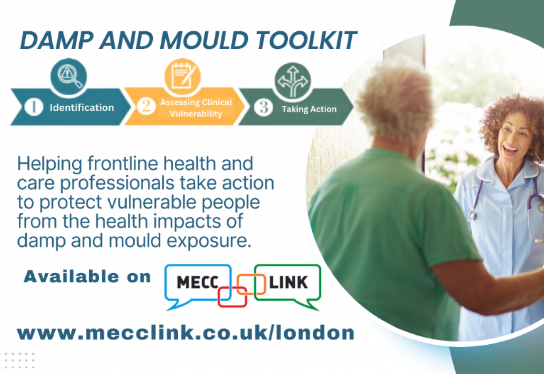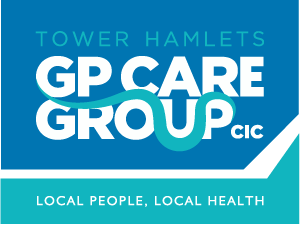Damp and Mould Toolkit for Frontline Health and Care Professionals
The borough’s vision of a seamless health and care experience for its citizens.

Everyone has the right to live in a warm, secure and decent home yet too many people are still living in a home with damp and mould, which may be putting their health at risk
This issue was brought into sharp focus following the tragic death of two-year-old Awaab Ishak in December 2020, following ‘chronic exposure’ to mould in his family’s social rented flat in Rochdale. The November 2022 Coroner’s report concluded that Awaab Ishak’s death was a direct result of prolonged exposure to mould in his home.
In September 2023, the Government published new guidance as part of it’s response to the Coroner’s report - Understanding and addressing the health risks of damp and mould in the home. This national guidance outlines the serious risks that damp and mould can pose to tenants’ health, the imperative to respond quickly and the practical steps that should be taken both to address damp and mould and to prevent them.
In London, a multi-agency group of local government and health system partners – including the London Association of Directors of Public Health, the Greater London Authority, NHS England (London region), the UK Health Security Agency and the Office for Health Improvement and Disparities (OHID) – came together to develop a new tool for use by frontline health and social care professionals when visiting residential properties. The purpose of the tool is to help health and care professionals understand and recognise damp and mould concerns and issues, identify those individuals and households most vulnerable to the health risks of damp and mould exposure, and enable them to provide appropriate advice and take action. Where concerns are identified, the tool provides guidance on actions to take in the form of advice, signposting to other resources and information, and template letters to local authority housing teams.
The London Damp and Mould assessment toolkit can be accessed via MECC Link London - an online directory of health and wellbeing services localised to all 32 London boroughs and the City of London, as well as information on healthy lifestyle topics.
Gladys Xavier, ADPH London Lead for Housing and Health and Director of Public Health for Redbridge said:
“Addressing damp and mould as a public health concern is a key priority for Public Health in London as elsewhere. Legislation to improve housing standards by holding landlords to account is welcome, but damp and mould will no doubt persist, and we must protect people who are vulnerable. Whilst everyone is vulnerable to the health impacts of damp and mould, we know that people with certain health conditions, children and older adults are at greater risk of more severe health impacts.
This resource is an excellent example of regional collaboration, and we are grateful for the input and support from a wide range of partners including the Association of London Environmental Health Practitioners, London Local Authority Chief Executives, London Directors of Housing, the Health and Housing Impact Network and London Directors of Public Health.”
Julie Billett, Deputy Regional Director, OHID London
“The tragic death of Awaab Ishak has led to a step change in awareness of the harms of damp and mould in the home as a public health issue. While the solutions and actions to tackle poor housing conditions lie beyond the health sector, frontline health and care professionals do have a key role to play in supporting and protecting the most vulnerable. This damp and mould assessment toolkit provides a clear framework to guide effective identification of damp and mould concerns, assessment of clinical vulnerability within the household, and intervention. Everyone deserves to live in a home that is safe, warm and dry and this resource will support professional to give advice and take action to help safeguard the health of residents where this is not the case.
Jane Clegg, MBE, Regional Chief Nurse at NHS England, London Region said:
“We welcome the development of this damp and mould assessment resource. People with underlying health conditions, the very young and older residents are more vulnerable to respiratory infections exacerbated by damp and mould, so we must do everything we can to mitigate these health impacts. But we often hear from health professionals that they are uncertain what to do or how best to advise and support their patients and clients living in homes affected by damp and mould.
“This resource gives clear and practical guidance on appropriate actions to take. As we head into winter, I would strongly recommend that public facing health and care professionals familiarise themselves with this excellent resource and use it within their practice.”








